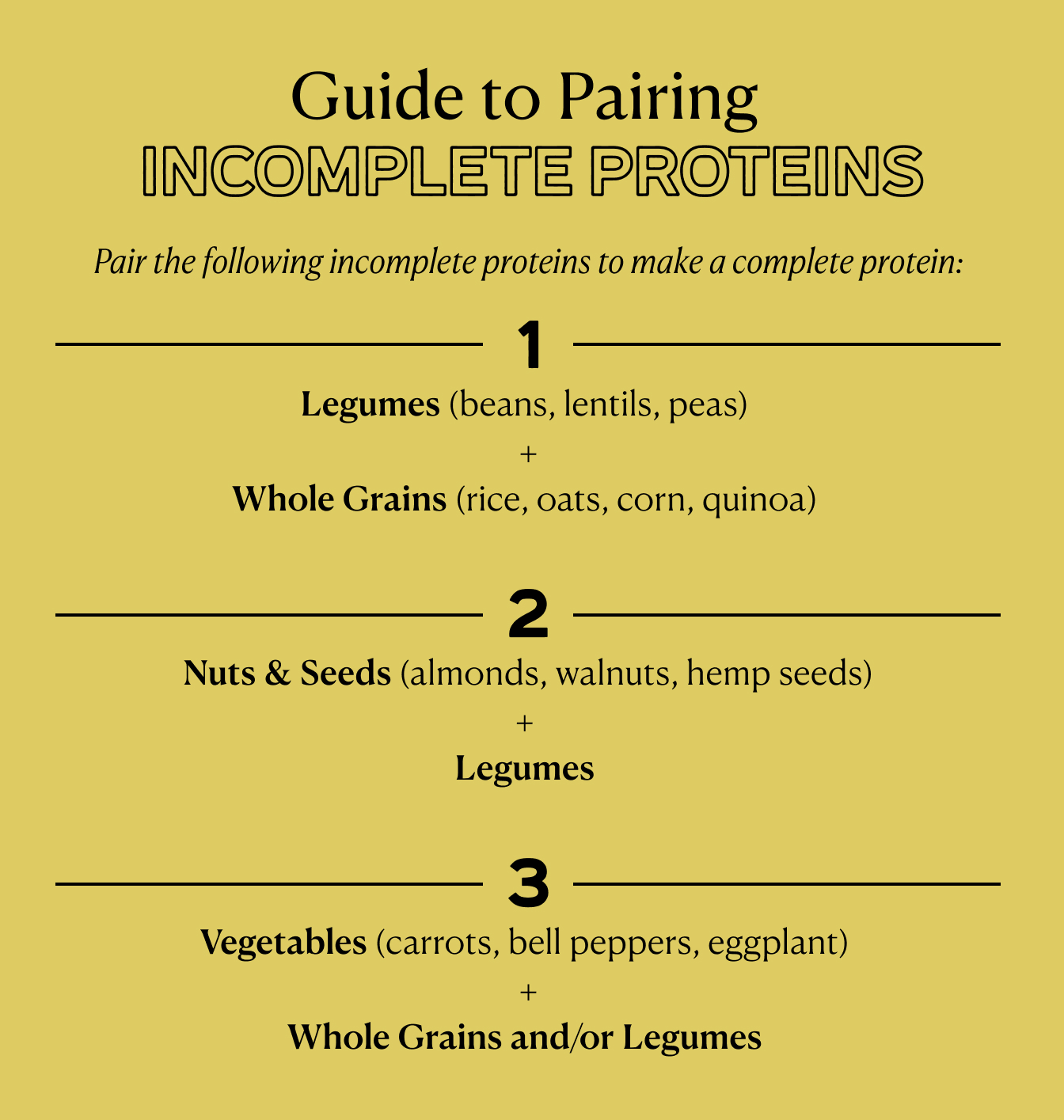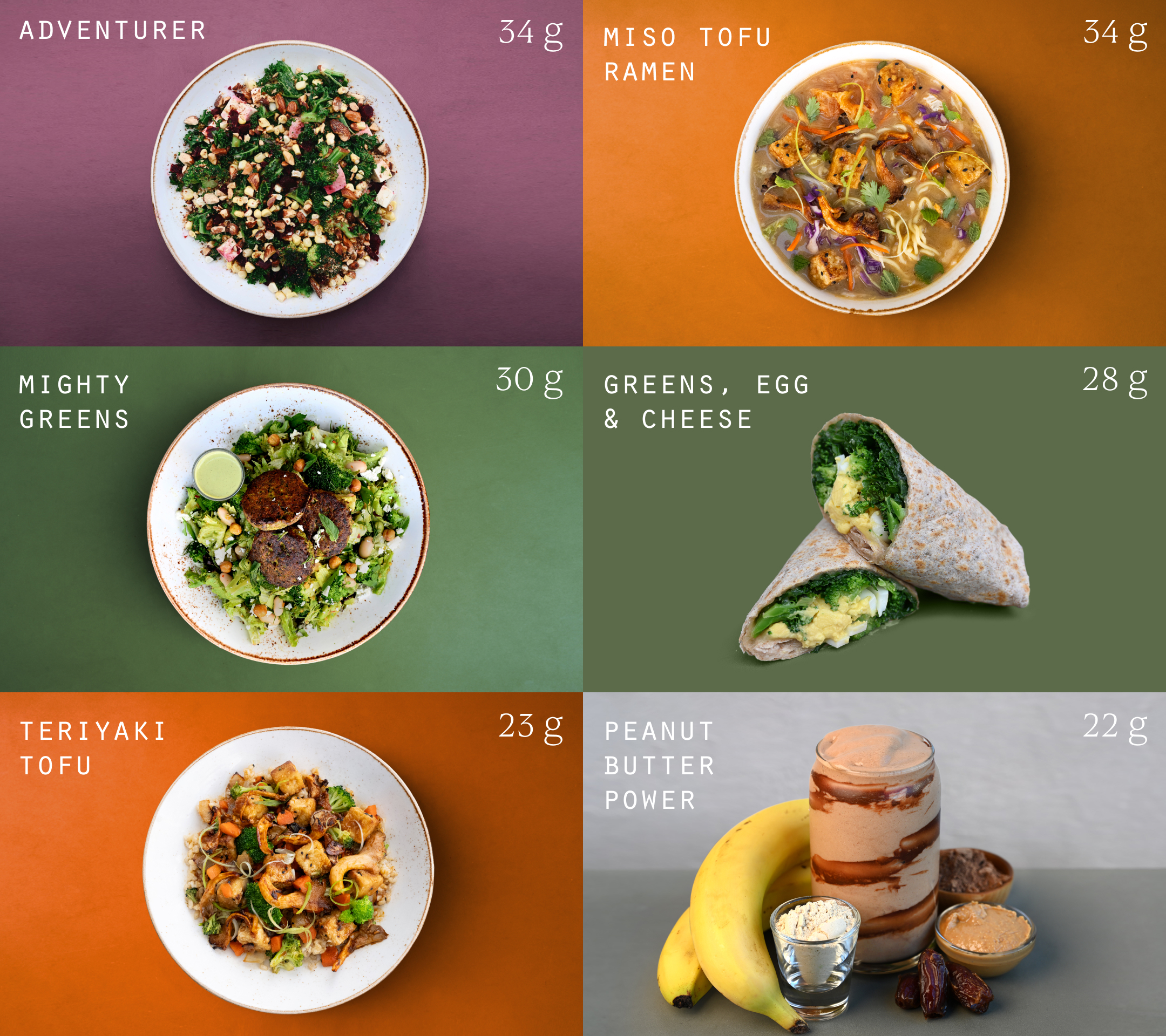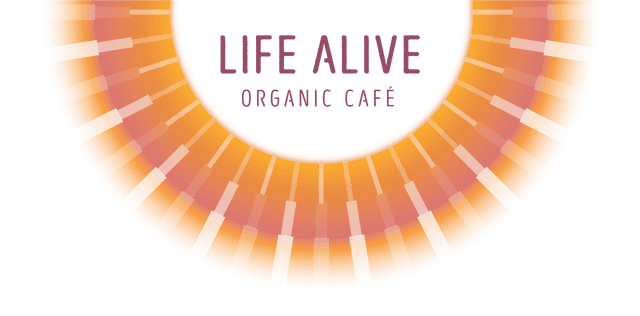Written by Life Alive Resident Dietitian, Jasmin Dieb
You’ve heard you should be eating more protein—but why, when and how much do you actually need?
Protein plays a central role in helping us feel strong and energized—and not just for athletes and weightlifters. Whether you're flowing through yoga, swimming laps, going on a walk, or getting through your workday, protein is ensuring your body is fueled from the inside out.
Let’s dig into what protein actually is, why it matters for everyday vitality, and how you can get enough of it—especially if you live a plant-based lifestyle.
What is Protein, Really?
Protein is one of the three essential macronutrients—alongside fats and carbohydrates—and it’s found throughout your entire body. In fact, over 10,000 different proteins help make up everything from your muscles and bones to your hormones and immune system. They’re all built from amino acids. Amino acids are like the bricks of a house and protein is your body’s construction crew—working behind the scenes to build, repair, and support nearly every cell and function.
But here’s the key difference: unlike carbs and fat, your body can’t store protein for later. That’s why it’s important to keep replenishing it throughout the day to keep your body working at its best.
Why Protein Matters
Here’s what protein is doing behind the scenes every single day:
Helps you recover and become stronger – no matter what type of movement you choose in your day to day, protein repairs and rebuilds your muscles so you can keep moving with ease.
Regulates your hormones and metabolism – Protein supports the production of key enzymes and hormones that affect everything from your energy and mood to your metabolism.
Boosts your immune system – Many of your body’s defenders—like antibodies—are made of protein, helping you stay healthy and fight off any potential infections.
Feeds your skin, hair, and nails – Protein helps produce collagen and keratin, the proteins behind strong nails, glowing skin, and shiny hair.
Improves satiety – Since protein helps stabilize your blood sugar, it helps you feel satisfied after every meal. You’ll have energy that lasts!
The Protein-Performance Connection
When you move your body, you create micro-tears in your muscle fibers. But that’s okay, it’s all part of the protein-performance connection. Your body needs protein to rebuild those fibers stronger than before.
So here’s how protein is key for optimal performance →
Helps your body bounce back after movement – Whether it’s a workout or just a long day on your feet, protein helps repair and rebuild your muscles.
Keeps your muscles strong– It helps prevent muscle breakdown when you're training hard
Supports stamina – Protein fuels endurance and helps your body stay strong over time.

How Much Protein Do You Really Need?
Not everyone needs the same amount of protein—it varies depending on your health goals, age, body weight, and overall activity level. According to the Dietary Reference Intake, the minimum for sedentary adults is 0.36 grams per pound of body weight (or 0.8 g/kg). But most research shows active individuals benefit from significantly more—about 0.6–1.0 grams per pound (1.4–2.2 g/kg).
Here’s something important to consider - the concept of complete vs. incomplete proteins.
Complete proteins contain all 9 essential amino acids that our body cannot make on its own
These come from all animal based sources of protein (dairy, meat, eggs, fish)
Some sources of plant-based protein (quinoa, tempeh, tofu)
Incomplete proteins lack one or more of these 9 essential amino acids
Sources of plant-based protein (legumes, grains, nuts, seeds)
So, what does this mean for you? This means that if you live a more plant-based lifestyle and most of your protein comes from plants, you’ll need to make sure to mix up your sources so no “essential” components of protein are missing. This is why variety is key! You can combine black beans + rice, hummus + pita bread, tofu + grains. Here’s a guide you can follow to know how to pair certain incomplete proteins together.

Just a reminder that as long as you're getting a variety of sources throughout the day, your body stores and balances amino acids over time. Use this guide at your discretion.
Plant vs. Animal Protein: Is There a Difference?
Yes, but not necessarily in the way you might think.
Animal proteins are sources of complete proteins and tend to be more bioavailable—meaning your body digests and uses this food more readily.
Plant proteins may be incomplete or lower in certain amino acids, but plants also offer extra benefits—fiber, antioxidants, phytochemicals—that animal products don’t.
You don’t have to choose one over the other. The most important thing is getting enough total protein and diversifying your sources.
Getting Protein in the Life Alive Way
Protein doesn’t have to mean meat or powders. At Life Alive, we highlight vibrant, whole-food, plant-powered options that support your body and the planet.
Some protein-rich stars on our menu:
Tofu
Provides all nine essential amino acids, making it a complete protein

Legumes
Like lentils, black beans, and chickpeas – rich in protein and fiber

Whole Grains
Like quinoa and brown rice

Nuts & Seeds
Especially hemp seeds, chia seeds, pumpkin seeds and almonds

Eggs & Cheese
For flexitarian guests, these animal-derived sources are rich in bioavailable protein

Protein-Powered Plates at Life Alive
Each dish is thoughtfully designed to provide you with complete balance —with protein that’s not only functional but flavorful.
Try these guest favorites:

Protein isn’t just for gym-goers—it’s for you, every day. It helps power your workouts, regulate your energy, and support long-term vitality. Whether you're plant-based, flexitarian or you eat a little bit of everything, protein is a key building block to help you live the energized life you crave.
.
Author: Jasmin Dieb, RDN
Jasmin Dieb is a Boston-based functional gut health dietitian who’s all about helping people feel their best through real, nourishing food. She's joined Life Alive as our Resident Dietitian to break down the science and share simple, realistic tips—because eating well should feel good and taste even better. In her private practice, Jasmin provides personalized, evidence-based strategies to uncover the root causes of digestive symptoms and deliver lasting relief. She empowers her patients to understand how nutrition directly impacts gut health and overall well-being, offering realistic solutions that fit their lives.
If you’re ready to take control of your gut health, click here to work with Jasmin.




